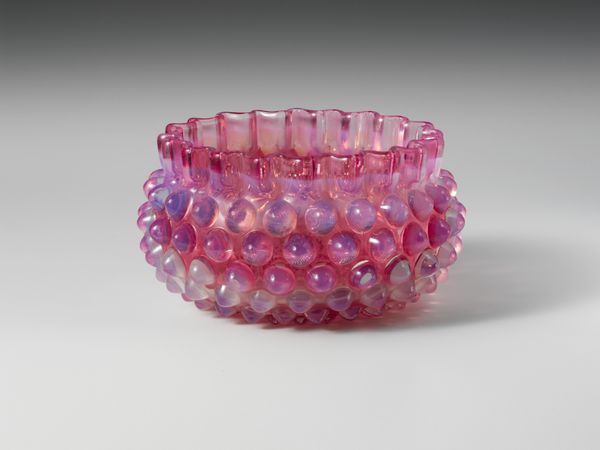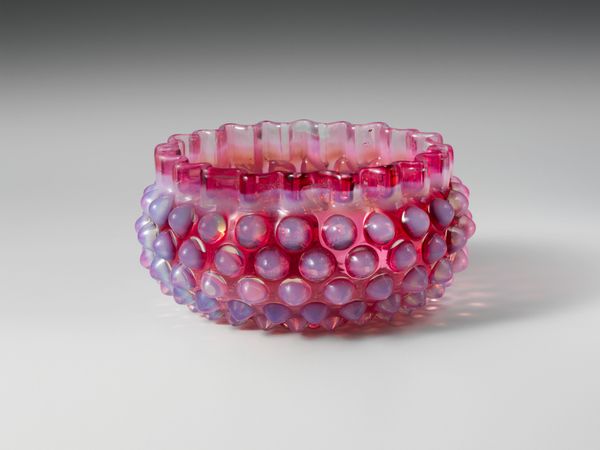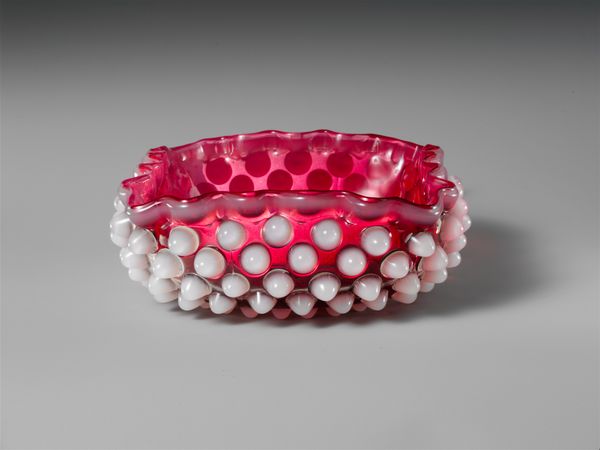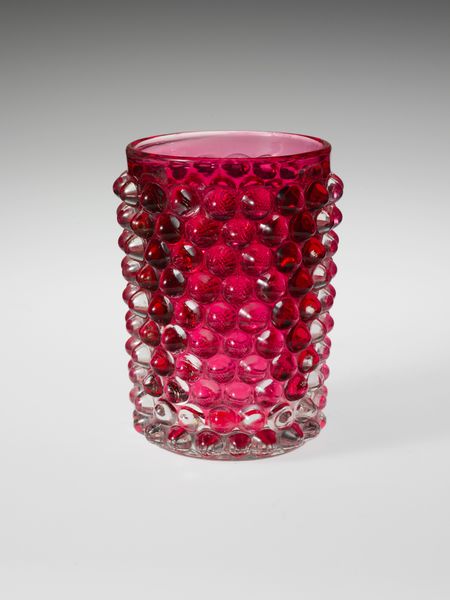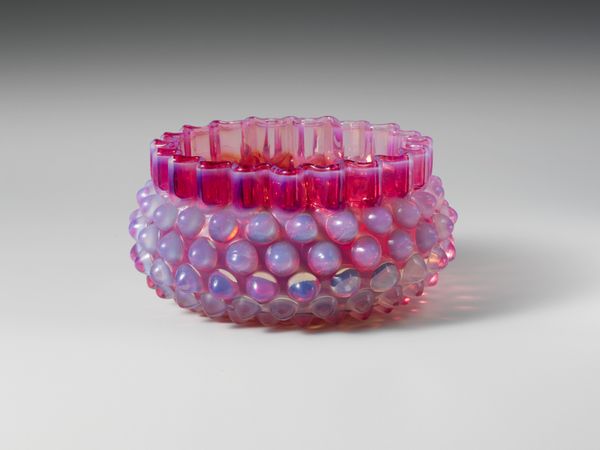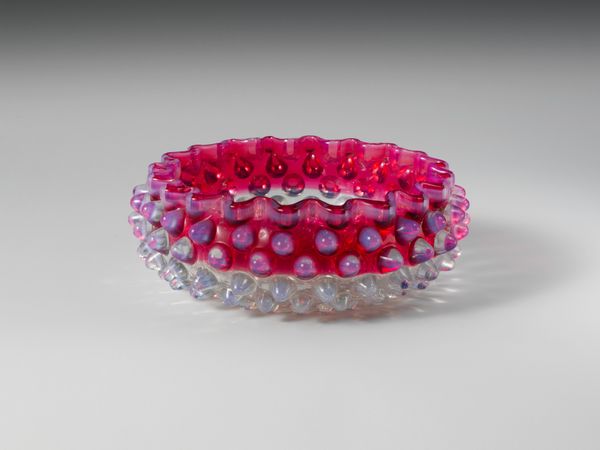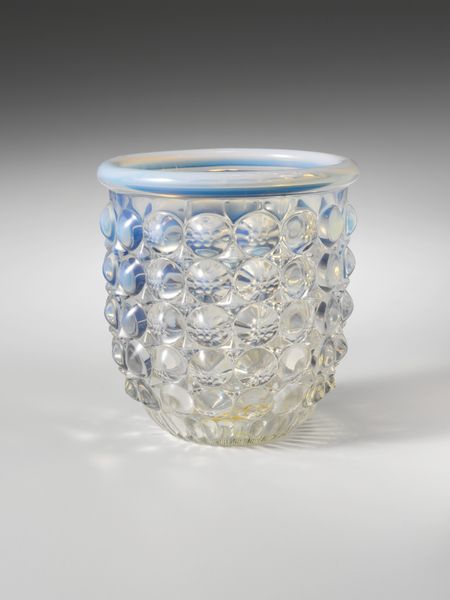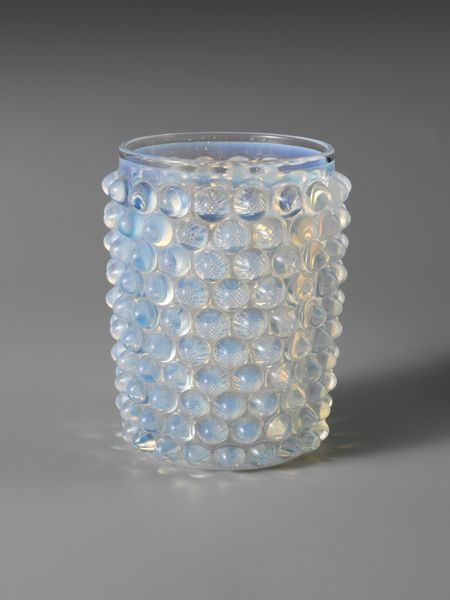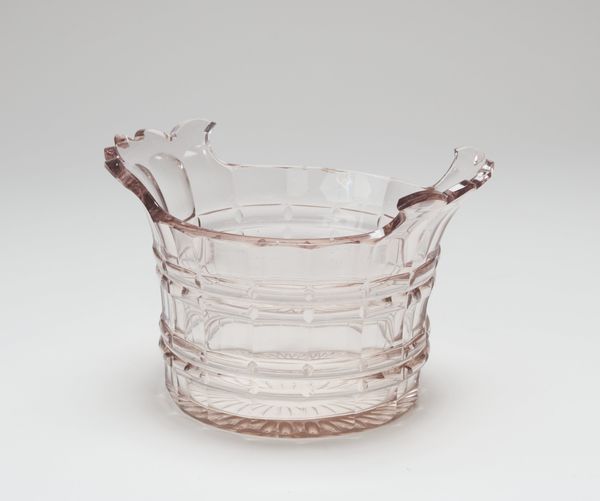
ceramic, glass
#
ceramic
#
glass
#
decorative-art
Dimensions: H. 2 3/4 in. (7 cm); Diam. 5 1/4 in. (13.3 cm)
Copyright: Public Domain
This finger bowl was made in America by Hobbs, Brockunier, and Company, probably in the 1880s. Its made of pressed glass, a technique that was at the forefront of industrial production at that time. What’s interesting is the way the material influences the design. Molten glass is forced into a mold, and then the object is released. This process is fast, cheap, and good for creating elaborate repeating patterns like the hobnails covering this piece. The overall effect is a dazzling surface texture. But there’s another aspect to the piece: labor. Pressed glass allowed manufacturers to churn out lots of fancy wares quickly, which drove prices down and put hand blowers out of work. Even though the finger bowl looks like a luxury item, it’s really a product of mass production and all the social issues that come with it. By looking at the materials, making process, and social context of an object like this, we can better understand its full meaning and challenge traditional distinctions between fine art and craft.
Comments
No comments
Be the first to comment and join the conversation on the ultimate creative platform.


